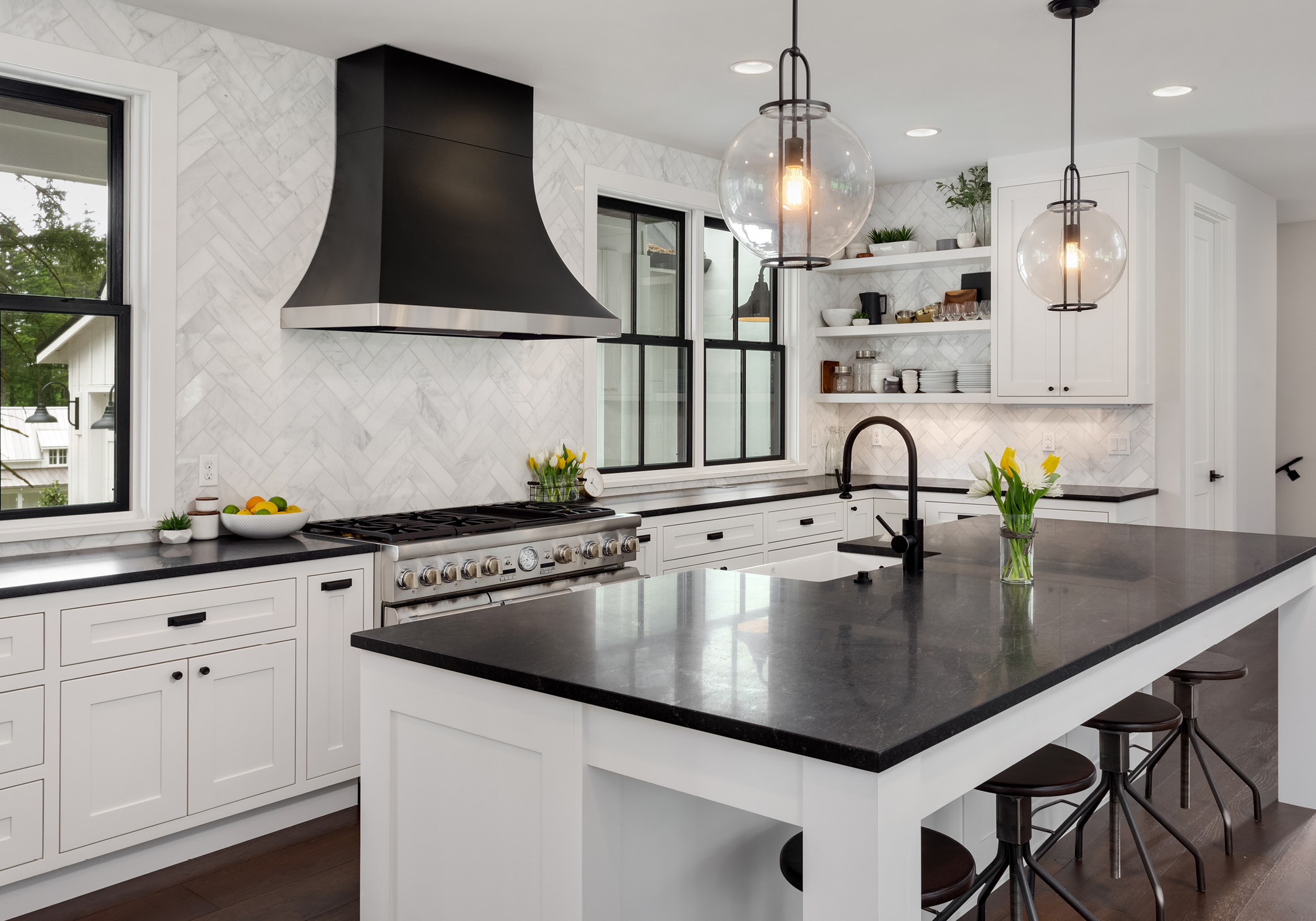Everyone loves a clean kitchen. Believe it or not, however, your kitchen countertops can be the most unclean parts of your house. It’s true: they are used to prepare raw and cooked food, they get splashed from dirty sink water and they have all manner of things dropped and spilled on them. While some of this unseen mess is harmless, common bacteria like listeria, salmonella and E. coli are not.
You may know that a cutting board has to be cleaned after it is used to cut up raw chicken or other meat, and that dirty dish sponges can be full of unhealthy germs. Anti-bacterial sprays and thorough cleaning with soap and water all help make kitchens more hygienic, but what else can you do? A good choice is to look for kitchen countertops that are made with more hygienic materials. If you are planning a kitchen remodel, you will want to make this a priority.
Types of Kitchen Countertops
There are more kitchen countertop choices out there than ever, made from wood, concrete, quartz, granite and marble. Southern Living advises homeowners that it is okay to mix and match material types from an aesthetic perspective, as long as you don’t go overboard. Some are scratch-resistant, while others like laminate are not.
Materials like granite and quartz will be more expensive, but are top-recommended materials, if your budget permits. You can cut and chop right on the surfaces of these materials, and they are heat-resistant. They are also more hygienic because they are scratch-resistant and less porous, so you will want to keep this in mind when making your selections.
Less-Hygienic Kitchen Countertops
Laminate countertops are versatile and inexpensive, and you can find them in countless colors and patterns. They are made from plywood or fiberboard, with a thin laminate covering. This material is more prone to scratching and heat, which makes it more susceptible to bacteria and germs.
Another less hygienic kitchen countertop material is wood, even though it can look great in country-style kitchens. You can find countertops made of various woods, like maple, walnut and cherry, made in both small and large pieces. Although wood is eco-friendly, it can also absorb bacteria. Wood kitchen countertops (and cutting boards) should always be disinfected after coming into contact with raw meat.
Kitchen design trends have been pointing towards stone countertops, which are stylish and modern. If you choose stone, it will have to be sealed, because it is porous. Some stone countertops also have finishes that make them non-porous but look more natural than sealants.
Concrete kitchen countertops have also come into the spotlight, and you can find them popping up on design sites and in homes. They do not look like traditional concrete; instead, they have interesting textures and colors. If the surface has cracks and pits, though, these imperfections can encourage bacteria growth. Like the look of concrete? Be sure that the countertop is finished and sealed to make it more hygienic.
More-Hygienic Kitchen Countertops
Quartz kitchen countertops are also popular in modern kitchens. Quartz is made from engineered rock chips and dust that are bound with resin, and the material is non-porous. It is less expensive than granite and stone, but it has the same kind of durability and beauty.
Granite is one of the hardest materials on the planet, and it also has a high resistance to scratches, heat and bacteria. Homeowners like granite because it has depth, rich colors and attractive patterns. It does not necessarily require sealing, but many companies recommend doing so.
Perhaps the most hygienic countertops are those made of stainless steel, and this is why they are found in commercial kitchens. They are manufactured in single sheets and known for their outstanding antibacterial qualities.
How to Clean Hygienic Kitchen Countertops
Even when the countertop material is more hygienic, it still needs to be properly cleaned. Granite countertops can be wiped down with warm soapy water or a mild bleach solution. You can remove stains with a baking soda/water paste or diluted bleach or ammonia. Do not use abrasive cleaners or scrubbers, and rinse the surface thoroughly.
Clean quartz countertops in much the same way, but do not use any bleach. Wipe up stains immediately, and use Windex or another surface cleaner for dried-on messes. Also avoid using anything abrasive, as it can damage the countertops. You can cut and chop on quartz or granite, but there is nothing wrong with using a good cutting board. Just remember to clean it well.


 Facebook
Facebook
 X
X
 Pinterest
Pinterest
 Copy Link
Copy Link


